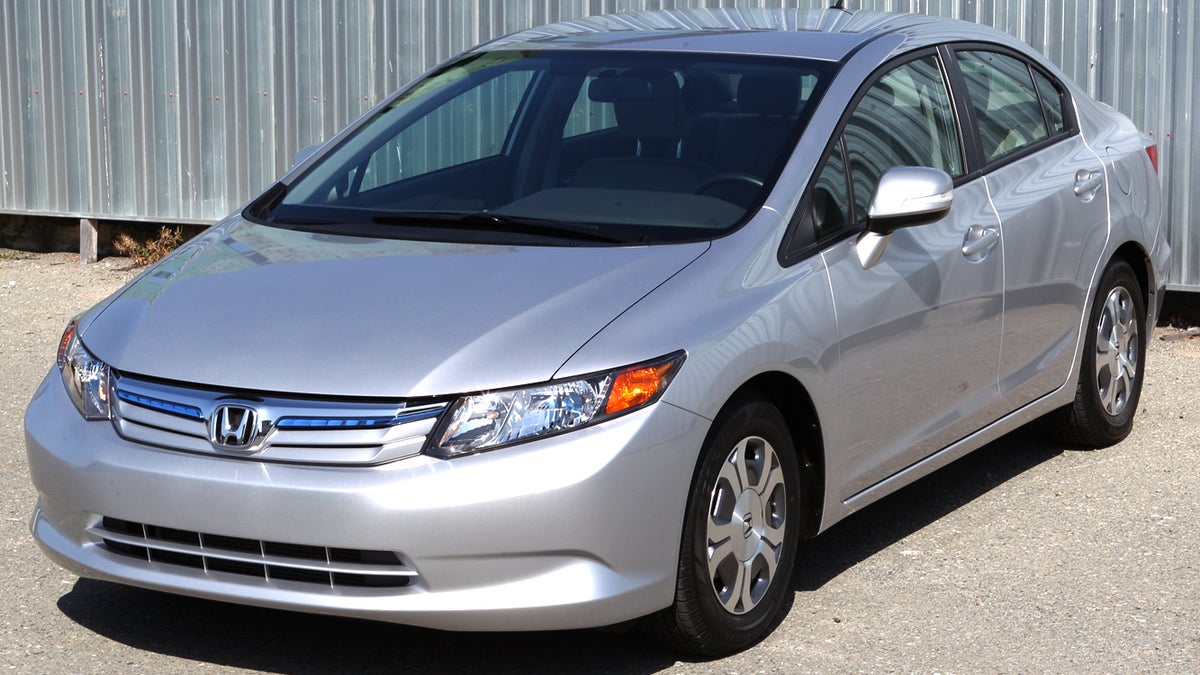Honda hurries to redo Civic
Automotive News reports on Honda's plans for a Civic update, and why it is happening so quickly after the just-released update.

SAN DIEGO--Because of the chilly reception this year for its redesigned Civic, which was universally panned for its cheap, hard-plastic instrument panel and center console, Honda is moving more quickly than planned on some midcycle changes.
"We take feedback seriously, regardless of who it's from, and we will act accordingly quickly," John Mendel, American Honda executive vice president, said in an interview.
The midcycle update normally would occur in spring 2014. But Mendel said the change could occur sometime in 2013.
Honda was in the midst of redesigning the Civic when the global economy imploded in 2009. Honda Motor CEO Takanobu Ito stopped the redesign in its tracks, and approved shortening the wheelbase and reducing content to appeal to budget-conscious consumers.
Reviewers chastised Honda for its penny-pinching ways after the car's debut in April. Consumer Reports removed the Civic from its "recommended" list for the first time in memory, calling it "cheap" and "insubstantial." A recent Wall Street Journal review called it "a betrayal."
For the car that leads the compact segment in retail sales--and is Honda's bread and butter--those words are damning when competitive entries from Ford, Hyundai, and Chevrolet have shown major improvement.
"I don't know how much we can do, and how quickly," said Mendel at the media launch of the redesigned 2012 CR-V crossover. "But the comments of Consumer Reports and our customers have not gone unnoticed. We are appropriately energized."
The launch was severely disrupted by the Japan earthquake on March 11. Dealers held blowout sales of the outgoing Civic in March and April, but allocations were slow in coming.
Still, the Civic was the most shopped nameplate in June, in the thick of the car's marketing launch, according to the consulting firm Compete Automotive. But the spike was surprisingly short-lived, and shopper volume declined quickly--"atypical for Honda in particular," the Compete report said.
The downgrade by Consumer Reports likely played a role in the diminished interest, Compete said.
Growth strategy
Although Honda's supply base was battered by the March earthquake, Mendel said Honda is cranking up North American production, building one plant and expanding others, in anticipation of a big growth spurt beginning next year.
"You are seeing us building capacity back in, then remixing [production] based on the market," said Mendel. "We're not increasing production of any vehicle per se, but a multitude of different vehicles, then letting the market decide."
Honda Division had predicted sales of 1.2 million units this year, before the earthquake struck.
"It's a safe bet" to use 1.2 million units as a starting point for a 2012 sales target, Mendel said.
With sales off 6 percent through September in an industry that's up 10 percent, the Honda brand has taken a beating. It has lost 1.4 points of market share. Most of that loss has been attributed to production shortfalls stemming from the earthquake.
Lost production
Mendel says the disaster has cost Honda 200,000 units of production meant for the United States. But with suppliers finally back online, Honda last week added a second shift at the Greensburg, Ind., assembly plant, which makes the Civic, generating another 100,000 units of annual capacity.
That is in addition to Honda having both its lines at Marysville, Ohio, running two-shift production resuming in 2012. That would be for the first time since Honda slowed the plants in early 2009 in reaction to the Lehman Brothers crisis. It also is adding a $64 million stamping press in Marysville, likely in anticipation of the redesigned Accord that comes next year.
Honda also is in process of building an $800 million plant in Guanajuato, Mexico, that will crank out 200,000 subcompact cars annually, starting in 2014, based on the Fit/Insight platform. Honda's Ohio transmission plant also has spent $50 million for aluminum casting operations.
Mendel said the moves are in anticipation of a strong recovery in auto sales. He cited analyst sales projections that vary as much as 3 million units for 2012.
"Regardless of what forecast you see, everyone is expecting growth," Mendel said.
"It feels good to let [the Indiana plant] stretch its legs."
The increase in local production also is a reaction to the increased strength of the yen against the dollar. Honda produces 80 to 90 percent of its U.S. sales in North America, but Mendel wants more.
"I don't think you can find anyone doing business in Japan saying the yen at 75 or 76 [to the dollar] is not a problem," Mendel said. "It's a big problem."
(Source: Automotive News)